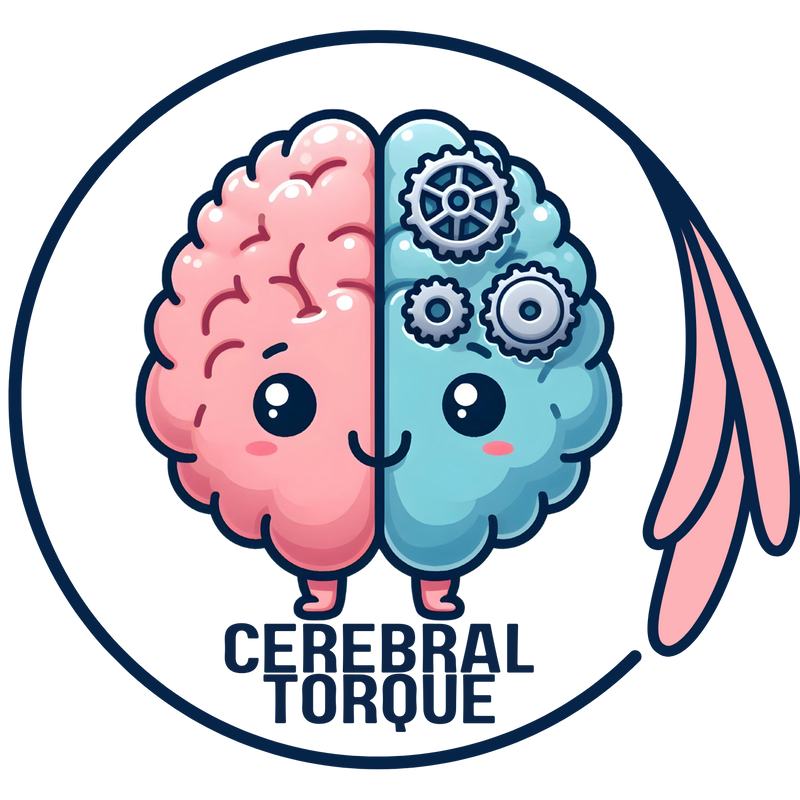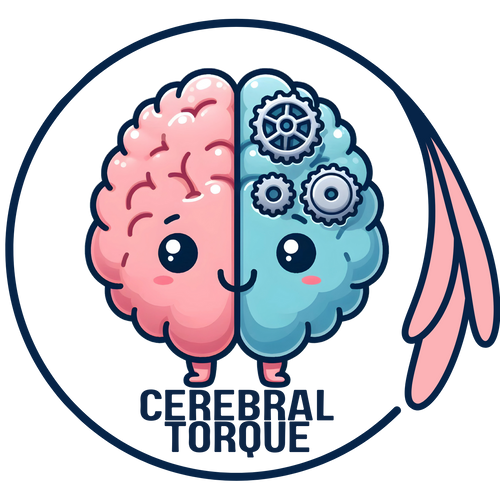Neuroimaging Differences Between Migraine Types: Aura vs. Without Aura
Posted on September 14 2025,
Brain Imaging in Migraine
Introduction: Unraveling Migraine's Brain Mysteries
Migraine affects millions worldwide, yet its underlying brain mechanisms remain complex and not fully understood. One of the most intriguing questions in migraine research is whether migraine with aura (MA) and migraine without aura (MO) represent different conditions or variations of the same disorder.
Recent advances in neuroimaging have allowed researchers to examine both structural and functional differences between these migraine subtypes. Understanding these differences could lead to better treatments and help explain why some people experience aura while others don't.
What is Migraine Aura?
Migraine aura consists of transient neurological symptoms that typically precede or accompany the headache phase. Common manifestations include visual disturbances like flashing lights, zigzag lines (fortification spectra), or blind spots (scotomas). Less frequently, aura may involve sensory disturbances, speech difficulties, or motor symptoms. This is called atypical aura.
Research Methodology
This comprehensive review analyzed neuroimaging studies comparing migraine with aura and migraine without aura using multiple advanced techniques. The research included studies published through May 2025, examining both structural and functional brain differences.
Study Selection Criteria
The review included original neuroimaging studies using MRI that directly compared migraine with aura and migraine without aura. Studies of chronic migraine and pediatric patients were excluded to focus on adult episodic migraine populations.
Structural Brain Imaging Findings
Structural neuroimaging found important differences in brain anatomy between migraine with aura and migraine without aura patients, particularly in white matter integrity and gray matter characteristics.
White Matter Changes in Migraine Subtypes
| Brain Region | Migraine with Aura Findings | Migraine without Aura Findings | Clinical Significance |
|---|---|---|---|
| Parieto-occipital White Matter | Decreased radial diffusivity Suggests axonal damage or altered microstructure | Normal values in most studies | May reflect repeated cortical spreading depression effects |
| Corpus Callosum | Reduced diffusivity markers Altered interhemispheric communication | Generally preserved structure | Could affect bilateral coordination of brain functions |
| Cingulate White Matter | Microstructural changes Affects emotional and pain processing pathways | Less pronounced changes | May contribute to different pain experiences |
| Cerebellum | Lower magnetization transfer ratio Suggests myelin-related alterations | Higher values compared to MA | Cerebellum involved in pain modulation |
Studies revealed that migraine with aura patients showed lower magnetization transfer ratios and altered T1 relaxation times in the thalamus compared to migraine without aura patients. This suggests differences in tissue microstructure that could affect the thalamus's role in processing and filtering sensory information.
Gray Matter Volume and Cortical Thickness
Both migraine subtypes showed decreased gray matter volume in visual regions V3 and V5 compared to healthy controls. However, cortical thickness analyses revealed more complex patterns, with migraine with aura showing specific alterations in areas involved in higher cognitive functions, memory, learning, and arousal.
Functional Brain Imaging Results
Functional neuroimaging studies provided insights into how brain networks operate differently in migraine with aura versus migraine without aura, revealing both similarities and distinct differences in brain connectivity and activation patterns.
Migraine with aura patients demonstrated heightened activation of visual processing regions, including the lingual gyrus, inferior parietal lobule, and cerebellum during visual tasks. This hyperresponsiveness strongly correlated with photophobia levels, suggesting a direct link between neural sensitivity and symptom severity.
Both migraine subtypes showed altered connectivity within the salience network, particularly involving the frontal executive network, thalamus, and putamen. However, migraine with aura exhibited additional reductions in cerebellar and brainstem connectivity compared to migraine without aura.
Arterial spin labeling studies revealed that migraine with aura patients had elevated cerebral blood flow in the superior frontal gyrus, postcentral gyrus, and cerebellum, but reduced flow in the middle frontal gyrus, thalamus, and medioventral occipital cortex. Additionally, reduced neurovascular coupling in the visual cortex was observed.
Key Research Findings
The comprehensive analysis of neuroimaging studies revealed several important patterns that distinguish migraine with aura from migraine without aura, while also identifying shared characteristics between the two conditions.
Primary Differences in Migraine with Aura
- Enhanced Visual Processing: Heightened engagement of visual regions, including striate and extrastriate cortices
- Cerebellar Changes: Decreased antinociceptive activity and altered connectivity patterns
- Thalamic Dysfunction: Impaired information filtering and processing capabilities
- Structural Alterations: White matter microstructural changes in key brain regions
Comparative Analysis: MA vs MO Brain Patterns
| Neuroimaging Technique | Shared Characteristics | Migraine with Aura Specific |
|---|---|---|
| Structural Imaging |
|
|
| Functional Connectivity |
|
|
| Blood Flow | Similar baseline perfusion patterns |
|
The Cortical Spreading Depression Connection
The observed differences in migraine with aura may result from cortical spreading depression (CSD), a wave of cortical hyperactivity followed by prolonged neuronal suppression. Whether these brain changes represent consequences of repeated CSD events or a primary predisposition to them remains an open question.
Study Limitations and Research Challenges
While the neuroimaging research provides valuable insights, several methodological limitations affect the reliability and interpretation of findings across studies.
Most studies failed to specify the migraine phase during scanning, potentially capturing patients during peri-ictal periods when brain metabolism and function may be altered. This heterogeneity significantly complicates the interpretation of structural and functional differences between migraine subtypes (Casillo et al., 2025).
Impact of Preventive Medications
Many studies included patients taking preventive migraine medications, which may alter brain structure and function. Beta-blockers, antiepileptics, and CGRP antagonists can all influence neuroimaging findings, potentially confounding study results and making it difficult to determine which changes are disease-related versus treatment-related.
Inadequate sample sizes, variability in preprocessing pipelines, and different analytical approaches created challenges for cross-study comparisons. The expanding array of potential analysis methodologies, termed "researcher degrees of freedom," can hinder reproducibility and inter-study reliability (Casillo et al., 2025).
Clinical Implications
Despite study limitations, the neuroimaging findings have important implications for understanding migraine pathophysiology and potentially guiding future treatment approaches.
Understanding Brain Network Dysfunction
The research suggests that migraine with aura exhibits altered cerebellar antinociceptive capacity, reduced thalamic information filtering, and increased visual processing region engagement compared to migraine without aura. These patterns may explain clinical differences in symptom presentation and treatment response.
Salience Network Involvement
Both migraine subtypes showed involvement of the salience network, which identifies and filters environmental inputs while modulating attention and behavior. This network's dysfunction may contribute to pain perception alterations and emotional responses to migraine attacks in both MA and MO patients.
The distinct neuroimaging patterns could potentially serve as biomarkers to differentiate migraine subtypes and predict treatment responses, though this requires validation in larger, well-controlled studies.
Understanding brain network differences may guide personalized treatment selection, particularly for patients with treatment-resistant migraine or complex symptom presentations.
Insights into specific brain regions and networks affected in each migraine subtype could inform targeted drug development efforts for more effective treatments.
Future Research Directions
To advance our understanding of migraine brain differences, future research must address current methodological limitations and adopt more rigorous approaches.
Research Priorities
Future studies should employ larger sample sizes, standardized protocols, careful migraine phase classification, and consistent outcome measures. Greater emphasis on clinical phenotyping of aura characteristics is also needed (Casillo et al., 2025).
Conclusions and Clinical Takeaways
The comprehensive analysis of neuroimaging studies reveals both shared characteristics and distinct differences between migraine with aura and migraine without aura, providing important insights into migraine pathophysiology.
Clinical Significance
While migraine with aura and migraine without aura share common brain network alterations, migraine with aura demonstrates distinct patterns of enhanced visual processing, altered cerebellar function, and impaired thalamic information processing. These differences may reflect either consequences of repeated cortical spreading depression or primary predisposing factors.
Impact on Patient Care
Understanding these brain differences could eventually lead to more personalized treatment approaches, better patient stratification for clinical trials, and development of targeted therapies. However, current findings require validation through larger, more rigorously designed studies before clinical implementation.
References
- Casillo F, Sebastianelli G, Abagnale C, Di Renzo A, Ziccardi L, Parisi V, Coppola G. Brain imaging in migraine with and without aura: Similarities and differences. Cephalalgia. 2025;45(9):1-11.
- Leão AAP. Spreading depression of activity in the cerebral cortex. J Neurophysiol. 1944;7:359-390.
- Lauritzen M. Cortical spreading depression in migraine. Cephalalgia. 2001;21:757-760.
- Hadjikhani N, Sanchez del Rio M, Wu O, et al. Mechanisms of migraine aura revealed by functional MRI in human visual cortex. Proc Natl Acad Sci USA. 2001;98:4687-4692.
- Headache Classification Committee of the International Headache Society. The international classification of headache disorders, 3rd edition. Cephalalgia. 2018;38:1-211.
- Granziera C, DaSilva AFM, Snyder J, et al. Anatomical alterations of the visual motion processing network in migraine with and without aura. PLoS Med. 2006;3:e402.
- Tessitore A, Russo A, Conte F, et al. Abnormal connectivity within executive resting-state network in migraine with aura. Headache. 2015;55:794-805.
- Magon S, May A, Stankewitz A, et al. Cortical abnormalities in episodic migraine: a multi-center 3 T MRI study. Cephalalgia. 2019;39:665-673.
- Fu T, Gao Y, Huang X, et al. Brain connectome-based imaging markers for identifiable signature of migraine with and without aura. Quant Imaging Med Surg. 2024;14:194-207.
- Silvestro M, Esposito F, De Rosa AP, et al. Reduced neurovascular coupling of the visual network in migraine patients with aura. J Headache Pain. 2024;25:180.
All Non-Invasive Neuromodulation Devices for Migraine Treatment
Wondering if migraine devices actually work? This guide breaks down the latest evidence on non-invasive neuromodulation devices like Cefaly, Nerivio, and gammaCore. Learn which devices have solid research backing them,...
Read MoreSun, Sep 14, 25
Neuroimaging Differences Between Migraine Types: Aura vs. Without Aura
Discover the latest neuroimaging research revealing key brain differences between migraine with aura and migraine without aura.
Read MoreThu, Sep 04, 25
Understanding Migraine Prodrome
Discover the migraine prodrome phase: 36 warning symptoms that occur 1-6 hours before headache onset. Learn timing patterns, predictive confidence levels, and new treatment approaches based on groundbreaking 2025 research...
Read More



